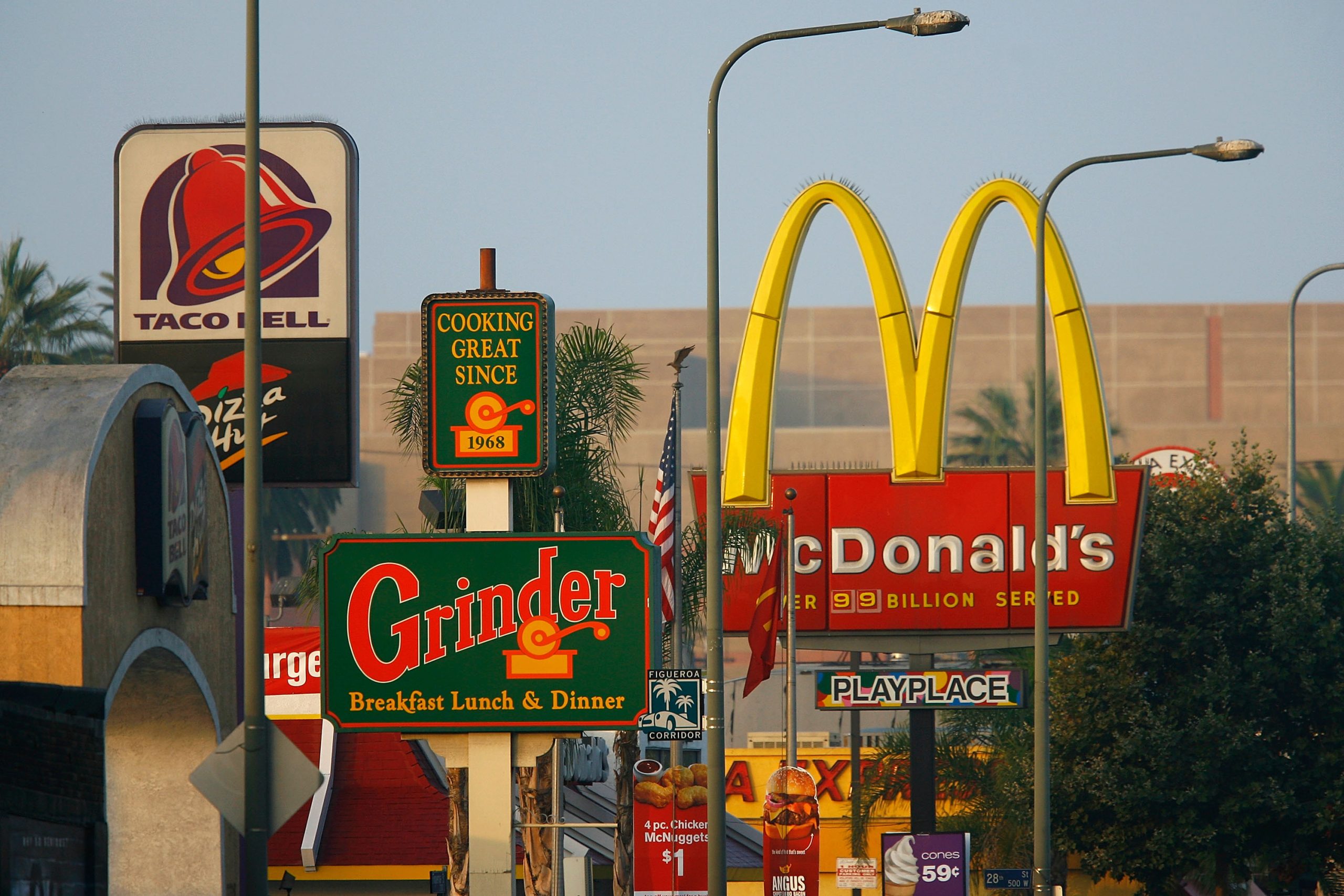Food Desserts? – No, Deserts
By Feh Gana, Senior at Poolesville High School
You’ve probably had to rush out to the grocery store once or twice to get that carton of milk you forgot had finished the other day. A quick five minute drive has no effect on the course of your day, and you are now happily at home with your carton of milk. Your access to food has most likely never been a problem, but have you ever thought about others’ access to food from where they live? Or how their income could impact the quality of the food they buy, and the type of transportation they have access to?
As defined as the USDA, food deserts are urban neighborhoods and rural towns without ready access to fresh, healthy, and affordable food.
Low-income communities, as well as communities of color, are most affected by this crisis. Most of the individuals belonging to these groups in food deserts don’t have an efficient mode of transportation for getting to stores that sell healthy and nutritious food as well. As a result, individuals have to resort to cheaper and closer alternatives. This includes convenience or corner stores, gas stations, and fast food restaurants. Because of the risk that comes with eating these foods consistently, those in food deserts are more likely to develop chronic health diseases such as diabetes, high blood pressure, and/or obesity. (National Association of Chronic Disease Directors)
These areas also lack structures like parks, gyms, trail grounds, or other areas that are used to promote physical well-being.

David McNew/2008 Getty Images from https://today.uconn.edu/2017/11/food-swamps-predict-obesity-rates-better-food-deserts/
Of course, food deserts didn’t arrive out of nowhere. Historical processes and events also played a role in the separation of communities with people of color and low-income individuals from white and rich communities. As defined by Cornell Legal Information Institute, this process, known as redlining, is the discriminatory and systematic denial of financial services such as mortgages, to residents of certain areas as a result of their racial and ethnic identity. The neighborhoods denied these services usually included a majority of low-income people of color. Systematic unequal access to certain services has contributed to food inequity in the present and the development of food deserts as a whole.
‘White flight’, has also played a large role in the process of redlining and the history of food deserts. Due to discriminatory housing regulations, there was a sudden migration of White Americans from ethnically and racially diverse neighborhoods, in search of places with less diversity. Unfortunately, where White Americans went, crucial businesses and companies did so as well. In the context of food deserts, supermarkets located in diverse neighborhoods no longer did business in those areas, and communities of color were often left without access to healthy or nutritious food.
However, some initiative has been taken to address this issue. In 2010, Michelle Obama launched the “Let’s Move!” campaign to address childhood obesity. This program included providing healthier food in schools, ensuring families have access to nutritious, affordable food, and helping children become more physically active. The Healthy Food Financing Initiative was also introduced, designed to eliminate food deserts in America by 2017. Ultimately however, this goal was not met.

Chuck Kennedy/The White House (https://letsmove.obamawhitehouse.archives.gov/achievements)
According to John Hopkins 2014 Montgomery County’s Food Systems Profile, Montgomery County had 93 supermarkets, as compared to 210 small food stores, like convenience and corner stores.
From the 2015 Montgomery County Food Access Report, participants without access to a vehicle described shopping at stores without healthy and nutritious food. Burtonsville was a primary location where participants described that it was difficult to reach a grocery store without vehicle access. Household income plays a significant role in an individual or a family’s ability to have access to healthy foods. Time and availability of kitchen resources are also some of the significant barriers of accessing healthy food. Residents may not have access to a kitchen, or enough time to shop for ingredients and cook healthy meals. There was also concern with the lack of access to healthy food and grocery stores in rural areas of the county, specifically Poolesville. Selected comments from the survey include:
“We are fortunate to have resources to allow ample food access. For people with limited incomes or lack of transportation, food access must be a challenge.”
“We are both over 70 and can foresee the lack of a grocery store in town will cause problems as our mobility decreases.”
“We need a grocery store in Poolesville.”
“Limited option in our town (Poolesville). There is no one stop shopping for groceries.”
Many residents in the rural area of Poolesville advocated for a grocery store, with one resident pointing out that their far distance from grocery stores would make shopping for healthy foods a challenge as people get older.
 Poolesville Shopping Center, prior to 2022 (http://www.magrudercos.com/property/poolesville-village-shopping-center/)
Poolesville Shopping Center, prior to 2022 (http://www.magrudercos.com/property/poolesville-village-shopping-center/)
The problem of food deserts cannot simply be solved by placing grocery stores in each area identified as a food desert. The components of racial and health equity, economics, and education also play a large part in eliminating food deserts. Montgomery County policy-makers should be making the access of applying for food assistance programs easier for residents, which can be done most efficiently by improving outreach and ensuring all communities are receiving the same opportunities as everyone else. Access to food is still a large problem in different areas of the county and many individuals are still being disproportionately affected by food insecurity. However, community members can still take action in a multitude of ways. Donating food and volunteering at food banks is a large help. Many different communities in the county are home to food banks, pantries, local churches, and/or soup kitchens. A list of resources and guidance on receiving food from them can be found at FoodPantries.org. A more detailed description of food assistance programs and distribution events in the county can be found here.
References
Cornell Legal Information Institute (2022, April 1) Redlining. Cornell Law School. Retrieved November 4, 2022, from https://www.law.cornell.edu/wex/redlining
Jon, McNamara. (n.d). Food pantries in Montgomery County Maryland. Need Help Paying Bills. Retrieved November 4, 2022, from https://www.needhelppayingbills.com/html/montgomery_county_maryland_foo.html
Montgomery County, Maryland Food Pantries. Food Pantries. (n.d). Retrieved November 4, 2022, from https://www.foodpantries.org/co/md-montgomery
What are food deserts, and how do they impact health? (2020, June 22). Medical News Today. Retrieved November 4, 2022, from
https://www.medicalnewstoday.com/articles/what-are-food-deserts
Food Warehouses/Pantries/Food Kitchens. (n.d) Montgomery County, M.D Disability Network Directory. Retrieved November 4, 2022, from https://www.montgomerycountymd.gov/HHS-Program/Resources/Files/A&D%20Docs/DND/DNDFoodWarehouses.pdf
Kelly Brooks. (Spring 2014) Research shows food deserts more abundant in minority neighborhoods. Retrieved November 4, 2022, from https://hub.jhu.edu/magazine/2014/spring/racial-food-deserts/
CNBC. (2020, August 22). Why Grocery Stores Are Avoiding Black Neighborhoods. Retrieved November 4, 2022, from https://youtu.be/Rd8J-9uUnfc
Community Food Assessment. Montgomery County, Maryland. (n.d). Retrieved November 4, 2922, from, https://mocofoodcouncil.org/wp-content/uploads/2015/08/MoCo-Food-Access-Report-2015.pdf
Johns Hopkins. (n.d). Montgomery County MD, Food Systems Profile. Retrieved November 4, 2022, from, https://mdfoodsystemmap.org/wp-content/uploads/2014/01/Montgomery-County1.pdf
About the Author:
 Feh Gana, Senior at Poolsville High School
Feh Gana, Senior at Poolsville High School
Feh is a senior at Poolesville High School and former Environmental Leader. She has always felt eager to find different ways to live more environmentally sustainably, and is always excited to listen to new and different perspectives on environmental issues. She’s particularly interested in the way climate change affects different demographics of people and its intersectionality with social justice.





